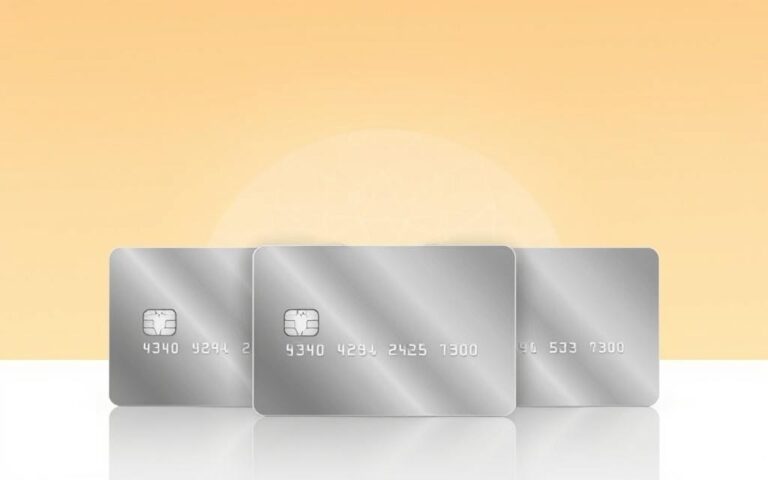Advertisement
Did you know nearly 8 million Americans have over $10,000 in credit card debt? This shows we really need good debt management plans. The avalanche method is a simple yet effective way to tackle high-interest debt.
The avalanche method means paying off debts with the highest interest rates first. This way, you can save a lot of money on interest over time. It takes discipline, but it’s a clear way to get out of debt.
Learning and using the avalanche debt repayment strategy can help you achieve financial freedom. This article will show you how to use this method in your life. It’s a step towards a debt-free future.
What is the Avalanche Method of Debt Repayment?
For those with many debts, the avalanche method is a clear and quick fix. It’s known for saving a lot of money on interest over time.
Definition of the Avalanche Method
The avalanche method is a way to pay off debts one by one. You start with the debt that has the highest interest rate. This way, you pay less interest in the long run. It’s a fast way to get rid of debt because you tackle the most expensive one first.

How It Works in Simple Terms
To use the avalanche method, list all your debts and their interest rates. Pay the debt with the highest interest rate first, but only make the minimum payments on others. After you pay off the highest-interest debt, move on to the next one.
| Debt Type | Interest Rate | Minimum Payment |
|---|---|---|
| Credit Card | 20% | $50 |
| Car Loan | 6% | $200 |
| Student Loan | 4% | $100 |
By following this method, you can make steady progress towards being debt-free. It’s great for those with high-interest debts because it saves money on interest and pays off the principal faster.
Benefits of the Avalanche Method
The Avalanche Method is a top debt repayment strategy. It focuses on paying off debts with high interest first. This makes the debt repayment journey faster and more motivating.
Faster Debt Repayment
This method targets debts with the highest interest rates first. This way, you tackle the most expensive debts quickly. It’s a debt repayment strategy that helps you pay off debts faster.
For instance, someone with credit card balances and a personal loan can save a lot. By focusing on the highest interest debt first, they save on interest. This speeds up their debt repayment.
Saving Money on Interest
Another big plus of the Avalanche Method is saving on interest. By focusing on high-interest debt payoff, you cut down on interest payments. This frees up more money for other needs or savings.
| Debt Type | Interest Rate | Balance |
|---|---|---|
| Credit Card | 22% | $2,000 |
| Personal Loan | 10% | $5,000 |
| Car Loan | 6% | $10,000 |
Increased Motivation to Pay Off Debt
Seeing debts disappear boosts your motivation. The Avalanche Method offers a clear plan and shows progress. This helps you stay motivated to become debt-free.
Understanding the Avalanche Method’s benefits helps you choose the right debt repayment strategy. It’s a step towards a financially stable future.
How to Get Started with the Avalanche Method
To start with the avalanche method, you need to know your debts and have a plan. This strategy helps save money on interest. It involves several steps to help you become debt-free.
List Your Debts
The first thing to do is list all your debts. This includes credit card balances, personal loans, student loans, and more. Being thorough is key, as this list is the base of your plan.
- Credit card debt
- Personal loans
- Student loans
- Mortgages
- Other financial obligations
Calculate Interest Rates
After listing your debts, calculate their interest rates. This is important because the avalanche method focuses on debts with the highest interest rates first. Knowing the rates helps you decide which debts to tackle first.
| Debt Type | Balance | Interest Rate |
|---|---|---|
| Credit Card | $2,000 | 18% |
| Student Loan | $30,000 | 4% |
| Personal Loan | $10,000 | 8% |
Create a Payment Plan
Now, create a payment plan based on your debts and interest rates. Pay the minimum on all debts except the one with the highest interest rate. This plan should fit your financial situation but still challenge you.
Key components of a successful payment plan include:
- Extra funds for the debt with the highest interest rate
- Timely payments to avoid fees
- Adjusting your budget for debt repayment
By following these steps, you can start the avalanche method and work towards being debt-free. Success depends on sticking to your plan and making adjustments when needed.
Step-by-Step Guide to Implementing the Avalanche Method
Using the avalanche method to pay off debt is easy. It involves sorting your debts by interest rate and paying them off one by one.
Prioritize Your Debts by Interest Rate
Start by making a list of all your debts. This includes credit cards, personal loans, and more. Then, sort them by interest rate, from highest to lowest.
| Debt Type | Balance | Interest Rate |
|---|---|---|
| Credit Card | $2,000 | 20% |
| Personal Loan | $10,000 | 12% |
| Car Loan | $15,000 | 6% |
By focusing on the highest interest rates first, you tackle the most expensive debts.
Make Minimum Payments on All Debts
While you’re paying off the highest interest debt, don’t forget to make minimum payments on the others. This stops extra interest and fees from building up.
“The key to successfully using the avalanche method is discipline and consistency. By making minimum payments on all debts except the one with the highest interest rate, you can efficiently pay off your debts.”
Allocate Extra Funds to the Highest Interest Debt
Put any extra money towards the debt with the highest interest rate. This could be from a side job, tax refunds, or other unexpected money.
By following these steps, you can use the avalanche method to pay off your debts and save on interest. Stay committed to your plan and adjust as needed.
Strategies to Find Extra Money for Debt Payments
Finding extra cash for debt can be tough, but there are ways to do it. To pay off debt faster, you need to find extra money to put towards it.
Budgeting Techniques
Good budgeting is key to managing your money and finding extra for debt. Start by tracking your income and spending to see where it goes. Use the 50/30/20 rule as a guide: 50% for needs, 30% for wants, and 20% for savings and debt.
Consider using apps like Mint or You Need a Budget (YNAB) to track your spending. These apps can show you where you can cut back.
Cutting Unnecessary Expenses
Reducing unnecessary spending is a simple way to save for debt. Look for areas to cut back. This includes dining out, unused subscriptions, and impulse buys.
Making a few changes can save a lot. Cooking at home can save $300-500 monthly. Canceling unused subscriptions also adds up.
Side Hustles to Increase Income
Another way to get more money for debt is to increase your income. Consider a side hustle like freelancing, tutoring, or a part-time job.
You can also make money from your skills or hobbies. For example, if you craft, sell on Etsy. If you write or design, offer your services on Upwork.
By using these strategies, you can pay off debt faster. Remember, every extra dollar helps when tackling high-interest debt.
Common Mistakes to Avoid with the Avalanche Method
Using the avalanche method to pay off debt needs careful planning. It’s a powerful way to clear debt, but knowing the pitfalls is key. This helps you stay on track financially.
Neglecting Minimum Payments
One big mistake is forgetting to make minimum payments on all debts. Except for the one with the highest interest rate, that is. It’s crucial to keep up with minimum payments on all other debts. This prevents late fees and keeps your credit score healthy.
- Make sure you have enough money for minimum payments on all debts.
- Use automatic payments to avoid missing due dates.
- Check your budget often to adjust for income or expense changes.
Ignoring Interest Rate Changes
Debt interest rates can shift, affecting your debt order. Keep an eye on interest rate changes and adjust your plan. This might mean changing which debt to tackle first.
- Check your loan or credit card statements for rate changes.
- Update your debt repayment plan if rates change a lot.
- Try talking to your creditors for better rates if you can.
Getting Discouraged Too Soon
Debt repayment takes time, and it’s normal to feel down. But it’s important to stay motivated and focused on your goals. Celebrate each debt you pay off to keep your motivation up.
Knowing these common mistakes and how to avoid them helps you use the avalanche method better. Stay committed, and you’ll reach financial freedom.
Tracking Your Progress
Starting the Avalanche Method means tracking your progress is key to your debt repayment strategy. Watching your progress keeps you motivated and helps adjust your payment plan if needed.
Tools and Apps for Monitoring Debt Repayment
Choosing the right tools makes tracking debt repayment easier. Many apps and software help you keep an eye on your progress. Budgeting apps, for example, let you track expenses and debt in one spot.
Some top picks include:
- Personal finance management tools like Mint or Personal Capital
- Debt-specific apps such as Debt Snowball or Avalanche Method calculators
- Spreadsheets for creating custom debt repayment schedules
Setting Milestones
Setting milestones is vital for keeping up the pace in your debt repayment journey. Breaking down your goal into smaller, reachable milestones lets you celebrate your wins. This keeps you motivated.
For example, you might aim to pay off a certain debt percentage within a time frame. Reaching these milestones boosts your confidence and keeps you focused on becoming debt-free. It’s the fastest way to pay off debt by keeping your motivation high.
Real-Life Success Stories
Real-life examples show how the Avalanche Method works well for debt repayment. It helps people save money by focusing on high-interest debts first. This way, they can pay off their debts faster and more efficiently.
Case Study: Paying Off Credit Card Debt
Sarah had $10,000 in credit card debt with interest rates from 18% to 22%. She used the Avalanche Method to tackle her debt. She started with the card that had the highest interest rate.
She paid the minimum on other cards and put extra money towards the 22% card. After 18 months, she paid off that card. Then, she moved on to the next highest interest debt.
Case Study: Student Loan Repayment
Alex had $30,000 in student loans with different interest rates. His highest rate was 6.8%. He used the Avalanche Method to pay off his loans faster.
He consolidated his loans and focused on the highest interest rate first. Alex’s hard work paid off. He paid off his loans two years early, saving over $1,000 in interest.
| Debt Type | Initial Amount | Interest Rate | Payoff Period |
|---|---|---|---|
| Credit Card | $10,000 | 22% | 18 months |
| Student Loan | $30,000 | 6.8% | 8 years (2 years early) |
These stories show how the Avalanche Method can save money and reduce debt. By focusing on high-interest debts, people can achieve financial freedom sooner.
Frequently Asked Questions about the Avalanche Method
Many people wonder if the avalanche method really works. It’s a popular way to tackle debt. Knowing how it compares to other methods can help you decide what’s best for you.
Is the Avalanche Method Right for Everyone?
The avalanche method is great for those with debts at different interest rates. It helps you save money by focusing on the highest interest rate first. But, it might not be the best for everyone, like those who need quick results.
Think about your financial goals and the debts you have. If you can stick to a plan, the avalanche method could be a good choice.
How Does it Compare to the Snowball Method?
The avalanche and snowball methods are two common ways to pay off debt. The snowball method focuses on the smallest debt first for quick wins. The avalanche method targets the highest interest rate first to save money.
The snowball method gives you quick victories, but the avalanche method saves more money. The right choice depends on your financial situation and goals.
Choosing between the avalanche and snowball methods should be based on your individual circumstances and financial goals. Some people even mix both methods or change their strategy as needed.
Conclusion and Final Thoughts
Using the avalanche method to pay off debt can save you a lot of money. It helps you get out of debt faster and achieve financial freedom.
Key Takeaways
The avalanche method starts with listing your debts and their interest rates. Then, you make a plan to pay off the ones with the highest rates first. This way, you can manage your debt well and work towards being debt-free.
Take Action Today
Now that you know about the avalanche method, it’s time to start. First, check your finances, make a budget, and find ways to cut back on spending. By controlling your money and using the avalanche method, you’re on your way to a debt-free life.
By using the avalanche method, you can quickly pay off your debts and reach financial stability. Start today and move towards a better financial future.



